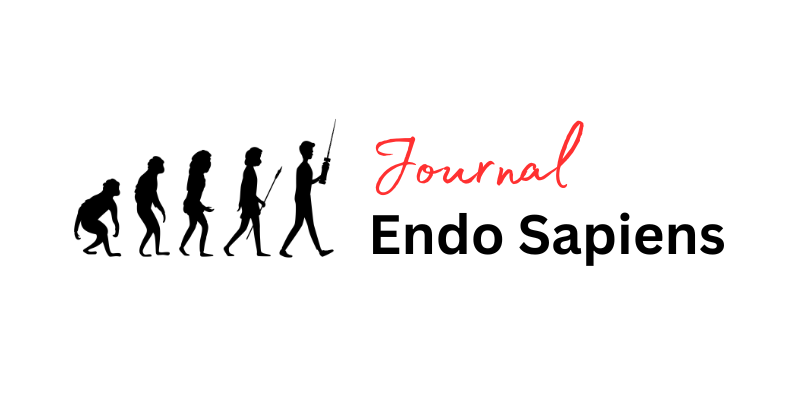
clinical research
Misdiagnosis of “J-shaped” or “halo” endodontic lesions influence treatment planning among non-endodontist practitioners
Jorge Vera, DDS, MS 1-2
Carolina Saucedo, DDS 2
Ana Arias, DDS 3
Felipe Restrepo, DDS 4
Paula Villa, DDS 4
Monica Romero, MS 1
Jorge Ochoa, DDS 5
Rubén Rosas, MS 2
https://doi.org/10.71347/yjfd356fd
1Advanced Endodontic Program, University at Buffalo School of Dental Medicine
Department of Endodontics, Buffalo, USA
2 Department of Endodontics, Escuela Nacional de Estudios Superiores UNAM-León, México
3 Department of Conservative and Prosthetic Dentistry School of Dentistry, Complutense University, Madrid, Spain
4 Graduate Endodontics Program, Faculty of Dentistry, University of Antioquia, Medellín, Colombia
5 Department of Endodontics, Universidad Veracruzana, México
Corresponding author:
Rubén Rosas, MS
e-mail: rubenrosasaguilar@hotmail.com
Keywords: Endodontic lesion, Endo-perio lesion, J-shaped lesion, Root fracture
Acknowledgements: The authors deny any conflicts of interest
Abstract
Objective: Radiographic “J-shaped” lesions can be present in teeth without vertical root fractures (VRF). The objective of this study was to assess the recommended treatment plan in this type of case.
Methods: Radiographs and clinical data from fifteen necrotic or endodontically-treated teeth with radiographic/tomographic “J-shaped” or “halo” endodontic lesions were presented during a lecture to 323 evaluators for treatment selection. The selection of treatments (endodontic therapy, periodontal therapy, endo-perio combined treatment or extraction) and the influence of patient/tooth-related factors in treatment decision planning were statistically compared.
Results: In general, participants significantly preferred (p<0.0001) an endo-perio combined treatment (44.7%), or extraction (31%) over endodontic therapy. Only 18% of participants would refer the patient to an endodontist or perform root canal therapy. Patient/tooth-related factors did not influence treatment-planning decisions.
Conclusions: Endodontic lesions with a radiographic “J” or “halo” shape were commonly misdiagnosed as endo-perio lesions and endo-perio combined treatment or extraction was often recommended as the treatment of choice.
Clinical significance: A very high percentage of teeth with “J-shaped” radiographic lesions do not have a vertical root fracture or an endo-perio lesion, so an endo-perio combined treatment or extraction should not be the treatment of choice in these cases.
Introduction
The relationship between the attachment apparatus and the root canal system has been widely documented and classified (Simon et al. 2013, Harrington 1979). In most cases, periradicular pathosis occurs apically and can be easily distinguished from endo-perio or periodontal pathosis.
Artaza L, F Campello A, Soimu G, Alves FRF, Rôças IN, Siqueira JF Jr (2021) Clinical and radiographic outcome of the root canal treatment of infected teeth with associated sinus tract: A retrospective study. Australian Endodontic Journal 47:599-607.
Bueno MR, Azevedo BC, Estrela C (2021) A Critical Review of the Differential Diagnosis of Root Fracture Line in CBCT scans. Brazilian Dental Journal 32:114-28.
Burns LE, Visbal LD, Kohli MR, Karabucak B, Seltzer FC (2018) Long-term evaluation of treatment planning decisions for nonhealing endodontic cases by different groups of practitioners. Journal of Endodontics 44:226-32.
Fayad MI, Ashkenaz PJ, Johnson BR (2012) Different representations of vertical root fractures detected by cone-beam volumetric tomography: a case series report. Journal of Endodontics 38:1435-42.
Goldberger T, Rosen E, Blau-Venezia N, Tamse A, Littner D (2021) Pathognomonic combination of clinical signs for diagnosis of vertical root fracture: systematic review of the literature. Applied Sciences 11:10893.
Harrington GW (1979) The perio-endo question: differential diagnosis. Dental Clinic of North America 23:673-90.
Jalali P, Tahmasbi M, Augsburger RA, Khalilkhani NK, Daghighi K (2019) Dynamics of Bone Loss in Cases with Acute or Chronic Apical Abscess. Journal of Endodontics 45:1114-18.
Jansson L, Ehnevid H, Lindskog S, Blomlöf L (1993) Relationship between periapical and periodontal status. A clinical retrospective study. Journal of Clinical Periodontology 20:117-23.
Jivoinovici R, Suciu I, Dimitriu B, Perlea P, Bartok R, Malita M, Ionescu C (2014) Endo-periodontal lesion--endodontic approach. Journal of Medicine and Life 7:542-4.
Kasahara Y, Iino Y, Ebihara A, Okiji T (2020) Differences in the corono-apical location of sinus tracts and buccal cortical bone defects between vertically root-fractured and non-root-fractured teeth based on periradicular microsurgery. Journal of Oral Sciences 23:327-30.
Kelly WH, Ellinger RF (1988) Pulpal-periradicular pathosis causing sinus tract formation through the periodontal ligament of adjacent teeth. Journal of Endodontics 14:251-7.
Quintero-Álvarez M, Bolaños-Alzate LM, Villa-Machado PA, Restrepo-Restrepo FA, Tobón-Arroyave SI (2021) In vivo detection of vertical root fractures in endodontically treated teeth: Accuracy of cone-beam computed tomography and assessment of potential predictor variables. Journal of Clinical and Experimental Dentistry 13:e119-e131.
Rivera EM, Walton RE (2008) Cracking the Cracked Tooth Code: Detection and Treatment of Various Longitudinal Tooth Fractures. Endodontics Colleagues for Excellence; American Association of Endodontists: Chicago, IL, USA.
Rotstein I, Simon J H (2006) The endo-perio lesion: a critical appraisal of the disease condition. Endodontic Topics 13:34-56.
See WK, Ho JC, Huang CF, Hung WC, Chang CW (2019). The association between clinical diagnostic factors and the prevalence of vertical root fracture in endodontic surgery. Journal of the Formosan Medical Association 118:713-20.
Seltzer S, Bender IB, Nazimov H, Sinai I (1967) Pulpitis-induced interradicular periodontal changes in experimental animals. Journal of Periodontology 38:124-9.
Simon JH, Glick DH, Frank AL (2013) The relationship of endodontic-periodontic lesions. Journal of Endodontics 39:e41-6.
Simring M, Goldberg M (1964) The pulpal pocket approach. Retrograde periodontitis. Journal of Periodontology 35:22-48.
Special Committee to Revise the Joint AAE/AAOMR Position Statement on use of CBCT in Endodontics (2015). AAE and AAOMR Joint Position Statement: Use of Cone Beam Computed Tomography in Endodontics 2015 Update. Oral Surgery Oral Medicine Oral Pathology Oral Radiology 120:508-12.
Suebnukarn S, Ngamboonsirisingh S, Rattanabanlang A (2010) A systematic evaluation of the quality of meta-analyses in endodontics. Journal of Endodontics 36:602-8.
Tamse A, Fuss Z, Lustig J, Ganor Y, Kaffe I (1999) Radiographic features of vertically fractured, endodontically treated maxillary premolars. Oral Surgery Oral Medicine Oral Pathology Oral Radiology and Endodontics 88:348-52.
Tamse A, Fuss Z, Lustig J, Kaplavi J (1999) An evaluation of endodontically treated vertically fractured teeth. Journal of Endodontics 25:506-8.
Vera J, Trope M, Barnett F, Serota KS (2006) Endodontic management of the endodontic-periodontal lesion. Int Dent 1:1-4
Walton RE (2017) Vertical root fracture: Factors related to identification. Journal of American Dental Association 148:100-5.
Yamasaki M, Kumazawa M, Kohsaka T, Nakamura H, Kameyama Y (1994) Pulpal and periapical tissue reactions after experimental pulpal exposure in rats. Journal of Endodontics 20:13-7.
Zehnder M, Gold SI, Hasselgren G (2002) Pathologic interactions in pulpal and periodontal tissues. Journal of Clinical Periodontology 29:663-71.
